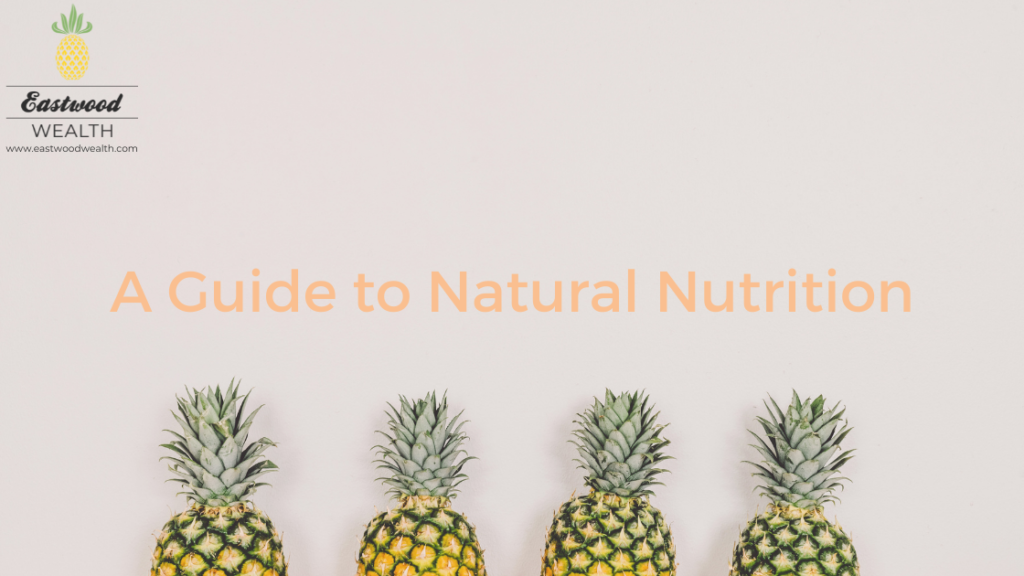March 24, 2022

According to the Centers for Disease Control and Prevention (CDC), heart disease is the leading cause of death for both men and women in the US. Some 735,000 Americans suffer a heart attack every year, and, although diet is not the only factor that contributes to poor heart function, it’s a huge part of it.
A whole foods diet is centered around plant-based, unprocessed nutrition sources, such as fresh vegetables, fruits, and whole grains. These are the foods we know we should be eating, and they are the ones that probably come to mind when you think of healthy eating habits. Plant-based diets have been linked to lower levels of heart disease, cancers, cholesterol, and a decreased risk for developing diabetes and digestive issues.
WHAT COUNTS AS WHOLE FOODS?
A good rule of thumb is that if the food is grown from the earth, it’s OK to eat. Sticking with some of the food groups we are familiar with, here are examples of the most basic whole-foods-approved foods, as outlined by the T. Colin Campbell Center for Nutrition Studies, a leading researcher and proponent of this diet that helps individuals and health professionals through its education, advocacy, and research.
FRUITS AND VEGETABLES
• Starchy and nonstarchy vegetables, such as broccoli, tomatoes, cucumbers, peppers, peas, sweet potatoes, lentils, squashes, and beans
• Whole fruits found in nature (i.e., not dried or in juice), such as apples, oranges, berries, and bananas
WHOLE GRAINS, SPICES, AND OMEGA-3 SOURCES
• Whole grain pastas, oats, and brown rice
• All spices
• Omega-3 sources, such as chia seeds and ground flaxseed
• Nuts, such as almonds, pistachios, and walnuts
DRINKS
• Water
• Decaffeinated teas and coffees
• Unsweetened, unflavored, plant-based milks, such as oat milk, almond milk, and soy milk
WHAT CAN’T I EAT?
Now that you know what you can eat, you’re probably still thinking, “What do I have to give up?” While it’s best not to think of eliminating processed foods as “giving something up,” there are still a number of foods you should avoid with this plan—and one of the most common concerns with a plant-based diet is how to get the necessary amount of protein while avoiding meat. However, when done correctly, this plan fills your diet with high-protein, high-fiber plant sources as a substitute to supplement the nutrients you may have been getting from meat.
TRY TO ELIMINATE AS MUCH AS POSSIBLE:
• Meat
• Dairy products
• Fatty cooking oils, such as olive oil, peanut oil, and canola oil
• Foods with added sugars
WHAT YOU SHOULD EAT SPARINGLY:
• Avocado
• Coconut
• Natural sweeteners, such as maple syrup and stevia
• Nuts, such as peanuts and almonds
HOW CAN I EAT MORE WHOLE FOODS?
The next step is formulating a plan for incorporating more whole foods into and removing processed foods from your diet. Most health professionals don’t recommend drastically cutting back on what you eat immediately—this often leads to bingeing and falling back on your goals. Instead, start planning your meals with whole foods in mind and substituting where it’s easiest.
WHOLE FOODS, HEALTHY RESULTS
There are so many other benefits to the whole foods diet than simply feeling healthier. Increasing the amount of fiber-and-vitamin-rich foods in your diet has been shown to contribute to a lower risk for heart disease and diabetes, and improved weight loss. It might seem obvious, but the better the foods you put into your body, the better you’ll feel now and in the future.
We all strive to live healthier in our everyday lives, and a whole foods plan is just one of many effective ways to achieve the results you want. It’s about filling your body with foods that fuel you, thinking more consciously about the choices you make, and eating with your future in mind, not simply for the sake of eating.
For more info, visit nutritionstudies.org
Tracking # 1-05260087
VIEW OUR Business Continuity Plan
CFP® Certified Financial Planner™ Certified Financial Planner Board of Standards, Inc. owns the certification marks above, which it awards to individuals who successfully complete initial and ongoing certification requirements.
Securities and advisory services offered through LPL Financial, a Registered Investment Advisor Member FINRA + SIPC.
The LPL Financial registered representative associated with this site may only discuss and/or transact securities business with residents of the Following states: NC, VA, SC, MD, DE and FL.
Financial planning services offered through LPL Financial, a registered investment advisor